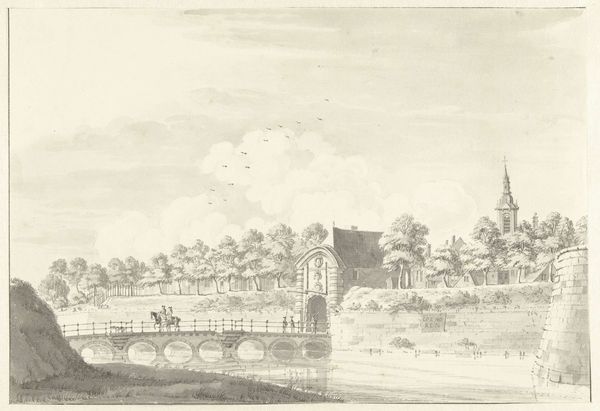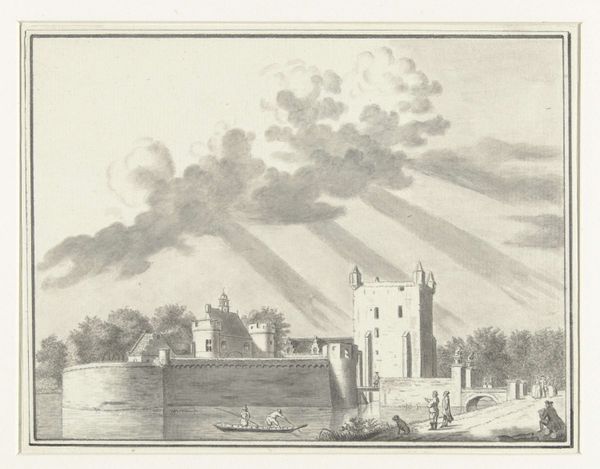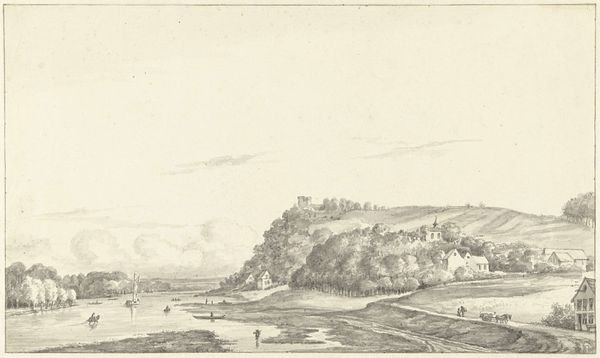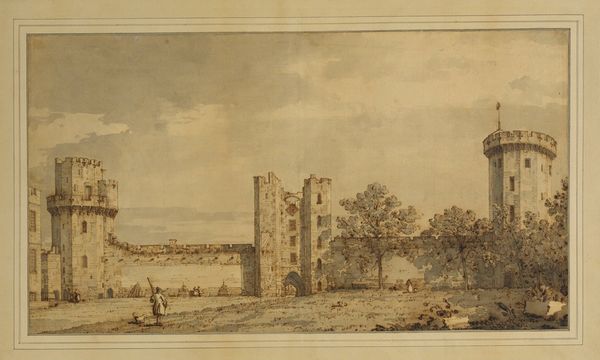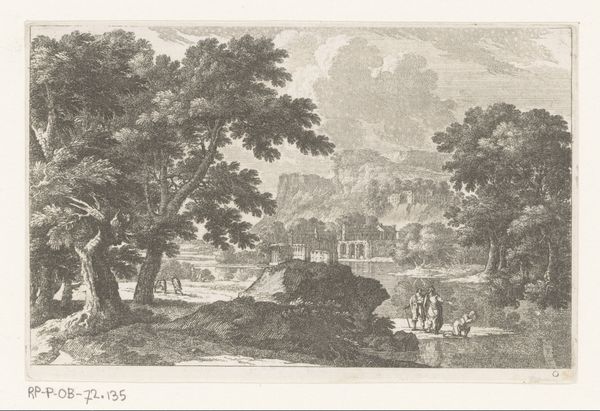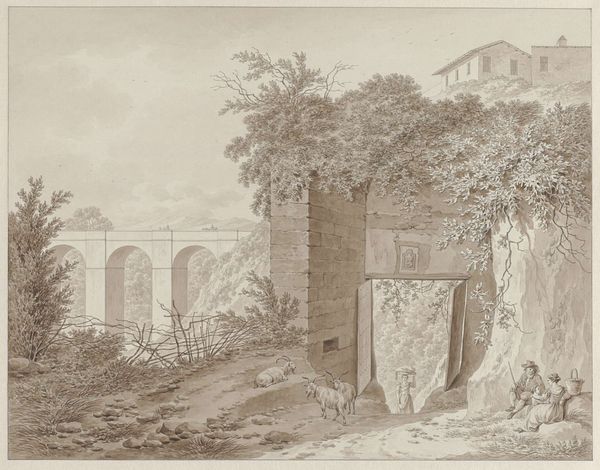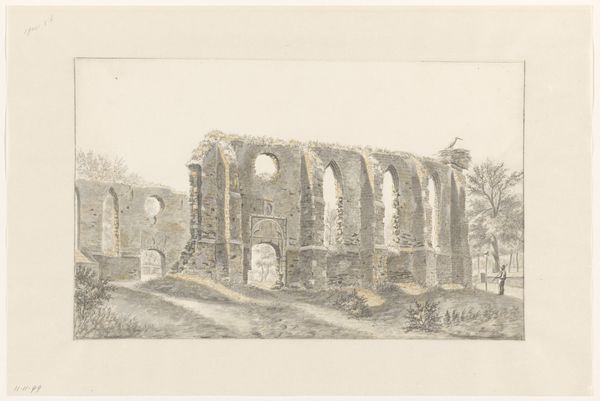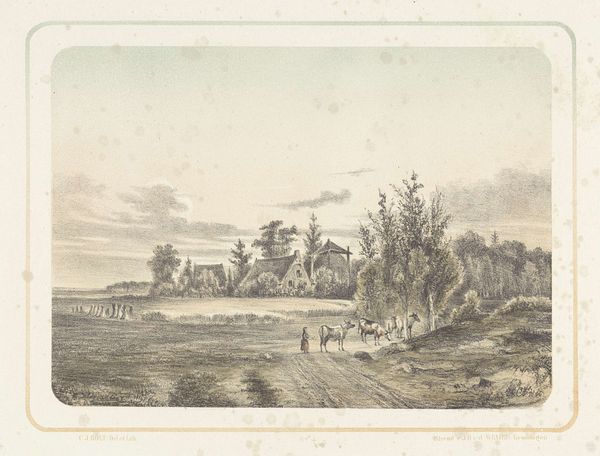
Het huis Spieringshoek tussen Schiedam en Vlaardingen; gezicht in de tuin c. 1750
0:00
0:00
drawing, ink, pencil, pen
#
drawing
#
baroque
#
dutch-golden-age
#
parchment
#
old engraving style
#
landscape
#
ink
#
geometric
#
pencil
#
pen
Dimensions: height 325 mm, width 383 mm, height 290 mm, width 345 mm
Copyright: Rijks Museum: Open Domain
Curator: This delicately rendered drawing, made around 1750 by Cornelis Pronk, depicts "Het huis Spieringshoek tussen Schiedam en Vlaardingen; gezicht in de tuin," or The House Spieringshoek Between Schiedam and Vlaardingen; View in the Garden. Editor: It has a strangely detached quality. The meticulous rendering and the monochrome palette lend a kind of clinical objectivity. It feels more like a survey than an impression. Curator: Absolutely. Pronk was highly sought after for his precise topographical drawings. The use of pen, pencil, and ink serves the clear intention to document Spieringshoek meticulously. Editor: And it speaks volumes about labor and control, doesn't it? Look at the incredibly manicured landscape. Topiary sheared into almost comical geometric forms, a perfect canal, people posing, clearly defining power dynamics and access to resources in Dutch society at that time. Curator: Exactly. The precise craftsmanship in pieces like this demonstrates an important value placed on skilled artistry within the Dutch Golden Age. We must appreciate Pronk's labor to show a slice of life. The quality of materials used—fine parchment and refined inks—also speaks to the patronage surrounding this type of work. Editor: But whose gaze are we adopting? Who is privileged enough to have this garden meticulously depicted? This wasn't a democratic process; it's a testament to the economic disparities reflected and even perpetuated within these visual records. These aren’t simply picturesque scenes; they reflect deep-seated social structures. Curator: That's a valid perspective, prompting questions about consumption and wealth, indeed. The existence of art like this confirms certain values that guided that community’s economy. Editor: I see the architecture, landscaping and lifestyle represented here. It also confirms the lives and aesthetics that were not represented. In what ways does Pronk perpetuate certain cultural expectations or biases of his time? Curator: Thank you, Pronk's artistic commitment to representing specific landscapes like Spieringshoek has opened new avenues for examining 18th-century Dutch landed estates and society. Editor: By revealing societal mechanics through art, we create a fuller understanding and reveal inequalities still very resonant today.
Comments
No comments
Be the first to comment and join the conversation on the ultimate creative platform.


